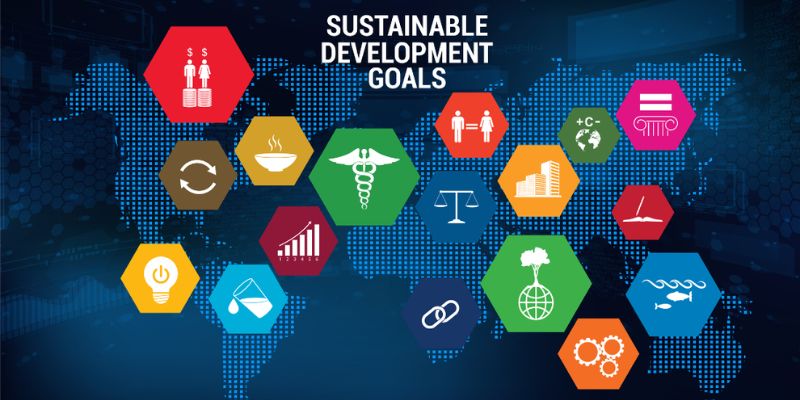Measuring the impact of sustainable investments is about more than feeling good. It’s about making sure your green dollars make real, positive change. I’m here to cut through the jargon and show you how. We’ll dig into ESG performance metrics that shine a light on the worth of your investments. I’ll help you understand how to sift through ESG data for accuracy, making your investment decisions smarter. Then, we’ll explore how frameworks and measurements like SROI and SDG alignment can guide you to invest with impact. Sure, you’ve heard of green bonds and loans, but do you know if they’re truly green? I’ll show you how to assess them. And when it comes to your investment portfolio, it’s crucial to track its environmental and social returns. Together, we’ll look into the tools you need to stay on top of your responsible investments. It’s not just about the returns—it’s about securing a greener future while we’re at it.
Understanding ESG Performance Metrics and Their Role in Investment Analysis
The Significance of Reliable ESG Data Accuracy
Knowing if our green investments truly make a difference starts with accurate ESG data. This reliable info helps us see if companies we invest in truly care about our planet and people. ESG performance metrics like carbon footprint scores and worker safety stats paint this picture. They tell us how well a company does in caring for the environment and its people.
First, let’s ask, “What’s ESG data?” ESG data is facts and figures that show how a company does with environmental care, how it treats people, and how well it’s run. Good ESG data should be true, full, and fresh. It helps us make smart choices about where we put our money. If the info’s not right, we may back a firm that talks green but acts dirty.
So, we dig deep. We check if a company’s report about using less water or helping the community is real. This means looking at proof, like bills and project reports. We also check other sources to make sure the company isn’t hiding something bad. This way, we send cash to the companies that walk the green talk. That makes our money work for a cleaner, kinder world.
Utilizing ESG Reporting Standards for Better Investment Choices
Now, how do we use this info? We get choosy. Using ESG reporting standards, we compare companies to find the best for our earth and people. These rules guide firms to share what they do for the planet, their staff, and how they rule their roost. We review this like a pro, using a sharp eye to pick winners.
Take a look at green bonds, for instance. These are like promises that raise cash for earth-friendly projects. We check if these bonds really help to cool the earth or cut trash. We use tools to measure what green bonds do, called green bond effectiveness. They show us how much good these bonds do, like planting trees or cleaning rivers.
For loans tied to being good to our world, called sustainability linked loans, we’re just as stern. We want proof that a company getting the loan does better for our earth or its people. This push for truth helps us invest in firms that mean business in making our world better.
These steps are big in guiding money towards good, green work. By finding firms that match up to strict ESG rules, we not only boost our bucks over time, we build a better planet, too. It’s a win-win we can feel proud of.
With clear ESG data and strict reporting rules, we hold firms to their green claims. We help money flow to true forces for good, all while aiming for greener returns on our investments. That’s being smart with our money and heart.
Remember, every dollar we invest with care has the power to grow a better future for us all.

Advancing Sustainable Investment Frameworks and Social Impact Measurement
Leveraging SROI to Quantify Social Benefits
We often ask, “Are we making a difference?” In the world of investing, it’s crucial. We look at SROI to find answers. It stands for Social Return on Investment. It shows us how a project’s social value compares to its costs. Imagine we invest in a program that teaches skills to young people. SROI would tell us how much social good we get for each dollar we spend.
SROI is more than numbers. It’s about stories and change. We talk to people, collect data, and then we crunch numbers. We see if the good we hoped for actually happens. For every dollar we see working, it feels like a win. We learn, improve, and know our money makes lives better.
Integrating SDG Alignment Measurement in Investment Strategies
We also sync our investments with bigger goals. You’ve heard of the UN’s Sustainable Development Goals (SDGs), right? They’re like a global to-do list for a better world. Our money can help check off those items. How we do it is through SDG alignment measurement.
SDGs guide us to invest with purpose. We look at how businesses run. Do they care about health, education, and equality? Do their actions protect our planet? If yes, they match the SDGs. Our investments push forward these global aims.
Having SDGs as a compass, we can march towards a planet where our kids can thrive. We find companies that care like we do. By funding them, we nudge the world onto a better path. It makes cents because it makes sense! Together, we can turn dollars into change for all.
In the end, it’s clear. Whether we’re screening investments for their social impact or lining them up with global goals, it’s about more than profit. It’s about shaping the future. And in that, every choice counts.

Assessing Environmental and Social Returns through Green Bonds and Loans
Assessing Green Bond Effectiveness in Achieving Environmental Goals
Green bonds make big promises. They fund projects that help our planet. But are they working? Yes, they are. They fund clean energy, efficient buildings, and much more. Now, let’s look closer.
Green bonds send money to the right green spots. They support our clean future. For example, when a city issues a green bond, they may build solar panels or wind farms. This means less dirty air from coal or oil. It’s a win for the city and the world!
But how can we be sure it’s really helping? We check the numbers. We look at how much carbon dioxide we avoid releasing. We also look at ESG performance metrics. These are like report cards for green projects. They tell us if we are really making a difference.
Cities and businesses that use green bonds must show their work. They must report on what they’ve done with the money. This makes sure they keep their green promises. It’s like doing your homework and having a teacher check it.
Green bonds are also watched by special groups. These groups help investors know that their money is going green in the right way. They want to see a clear path from money to results. And they want results that can be measured, like cleaner air or less waste.
The Impact of Sustainability-Linked Loans on Corporate Sustainability Initiatives
What about loans that push companies to do better for the world? These are called sustainability-linked loans. They reward companies for meeting green goals. If a company does better, they pay less in loan fees.
For example, a company might get money to make their factories cleaner. They might use less water or make less trash. If they succeed, they pay less.
These loans encourage companies to do their part for the earth. They help them start or grow green policies. They also show everyone that being green can save money. This can inspire other companies to follow.
To make sure it’s working, we use social impact measurement. This tells us how these loans change things. We count the real-world benefits, like how much cleaner a local river gets.
With ESG reporting standards, we can trust the reports from these companies. Just like a school report card, these reports are key. They tell us if companies are sticking to their green goals.
Investors like green bonds and loans. They can see their money doing good. It’s not just about profit. It’s about making a real difference, now and for the future.
To keep it all on track, consistent checks are needed. This means looking at ESG data accuracy and making sure it’s all true. When we see good results, it proves that going green can also mean making green. Responsible investment tracking is like a map that shows where the money leads.
These forms of investments show us that doing good can also lead to good returns. They show that a better world and smart investing go hand in hand.

Tracking Performance and Compliance in Responsible Investment Portfolios
Implementing ESG Investment Benchmarks and Risk Assessment Tools
Investing is not just about money. It’s about our future. That’s why ESG benchmarks are key. They help us track if our money works for a better world. Picture these benchmarks as a tool. They’re like a compass creating a path for investments. A path that cares for our planet and its people.
Let’s get deeper into these tools. How do they work? ESG risk assessment tools give us a clear sense of danger. These dangers are about the environment and society. We ask questions like, “Does this company pollute?” or “Do they treat their workers well?” The answers shape our choices and our future.
Now you may wonder, “Why are ESG performance metrics important?” Here’s the thing. They are like a report card for companies. Let’s say a company gets high marks for taking care of nature. If you care about the air you breathe and the water you drink, you’d want to invest in that company. Right? And companies that don’t score well? They remind us to think twice.
Enhancing Portfolio Analysis with ESG Scorecard Evaluation and Climate Risk Reporting
Investing is like gardening. You want all parts of your garden to grow, not just one. That’s where ESG scorecards come in. They look at every part. They help us make sure our investments help the planet, people, and profit. When companies we invest in do well by the world, our investments do well.
And then there’s the weather to think about – or climate, to be exact. Climate risk reporting is like a weather report for our investments. It tells us how storms, heat, and cold could hurt our money. It also tells us how our money might harm or help the climate. So we learn to choose investments that stand strong in a storm and help calm it too.
So, we’ve talked about tools that help us choose where to put our money. But how do we keep score? You guessed it – with the ESG scorecard. It’s like a scoreboard showing if our investments hit the goal. And the goal is pretty awesome – a healthier planet and happier people.
As we use these benchmarks and tools, we get better at spotting the champs. And by champs, I mean investments that make the world a little brighter. They do this by not harming our home – Earth. They also make sure people are treated right and get what they need. That’s smart investing with heart. And that’s the future we’re all about.
In this post, we’ve explored how ESG performance metrics shape investment analysis. We looked at the need for accurate ESG data and how using the right reporting standards helps make smarter choices. Sustainable investments now rely on tools like SROI and SDG alignment to measure social impact.
We also checked out green bonds and loans, seeing how they aid environmental goals and corporate sustainability. And finally, we saw how to keep tabs on responsible investments with benchmarks, risk tools, and ESG scorecard evaluations.
It’s clear: smart investing today must consider the planet and people, not just profit. Using these tools and methods, investors can aim for a future that’s both profitable and positive for our world. Let’s invest wisely and sustainably, for both our pocketbooks and our planet.
Q&A :
How do I evaluate the impact of my sustainable investments?
Evaluating the impact of sustainable investments involves analyzing both financial returns and the investments’ effect on environmental, social, and governance (ESG) factors. You can start by checking the sustainability reports of the companies you’ve invested in, as well as looking into their ESG ratings through specialized agencies. Further, comparing the performance of your portfolio against ESG benchmarks or indices can help you gauge its relative impact.
What metrics are used to measure sustainable investment success?
Measuring the success of sustainable investments typically revolves around a set of metrics that could include carbon footprint reduction, water usage efficiency, corporate social responsibility initiatives, and diversity in governance. Investors also use standards and frameworks, such as the Global Reporting Initiative (GRI), Sustainability Accounting Standards Board (SASB), or the UN Sustainable Development Goals (SDGs), to measure how investments align with broader sustainability targets.
Can sustainable investments yield competitive financial returns?
Yes, sustainable investments can indeed yield competitive financial returns. Research increasingly suggests that companies with strong sustainability practices may have better risk management and long-term viability, potentially leading to better financial performance over time. Moreover, with investor demand growing for ESG-focused products, sustainable investments are becoming an integral part in the financial strategies that aim for both impact and returns.
How does impact investing differ from traditional investing?
Impact investing differs from traditional investing by intentionally contributing to social or environmental benefits, along with generating financial returns. Traditional investments prioritize financial gain without necessarily considering the impact on ESG issues. Impact investors actively seek out opportunities that have a positive influence on society and the environment while still aiming for competitive returns.
What challenges exist in measuring the impact of sustainable investments?
Measuring the impact of sustainable investments presents several challenges, including the lack of standardized metrics, differing interpretations of what counts as ‘sustainable,’ and the complexity of tracking real-world outcomes directly to investments. Variability in reporting practices among companies also complicates comparisons, as does the time lag in seeing the results of sustainability initiatives reflected in impact measurements. Addressing these challenges is crucial for investors to accurately assess the effectiveness of their sustainability-oriented strategies.

